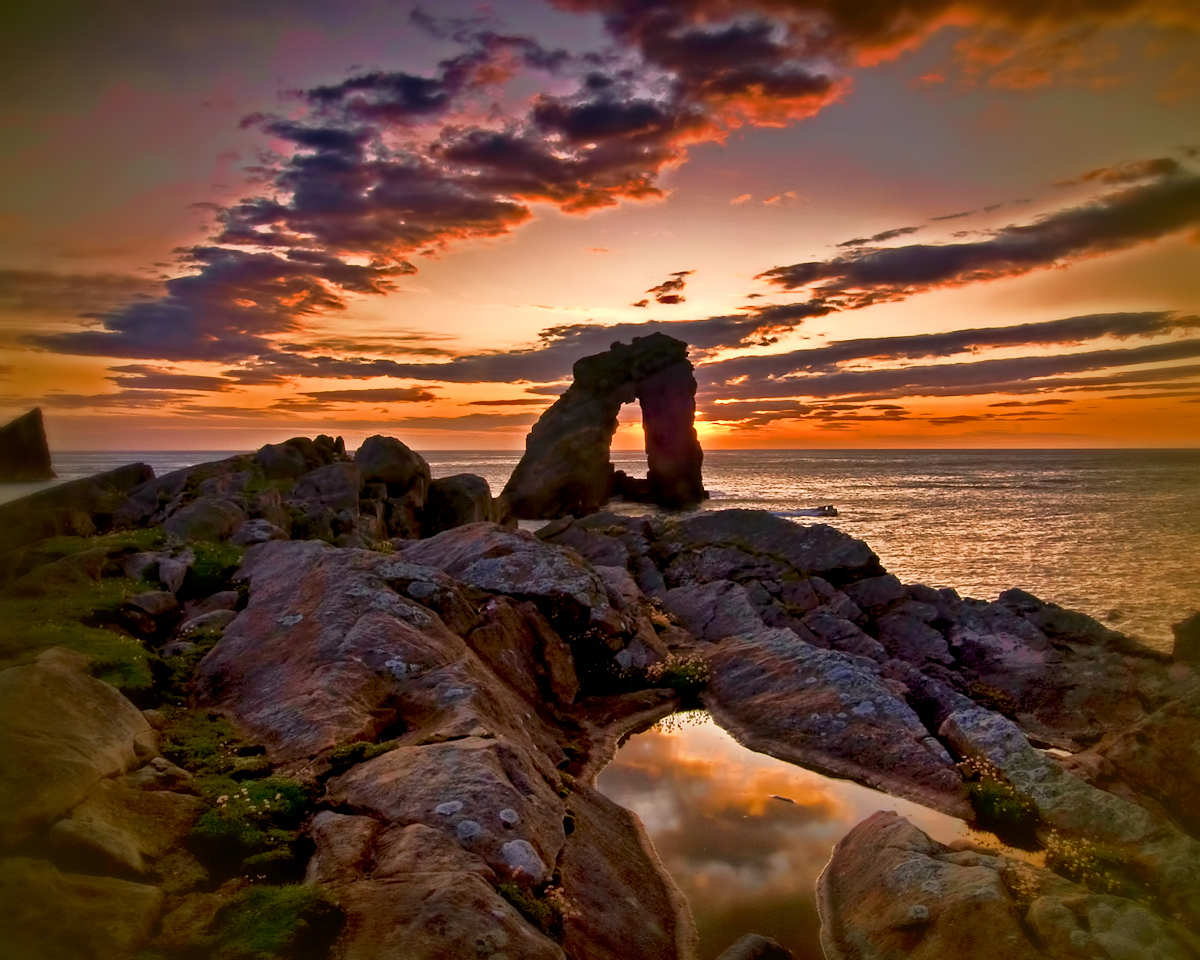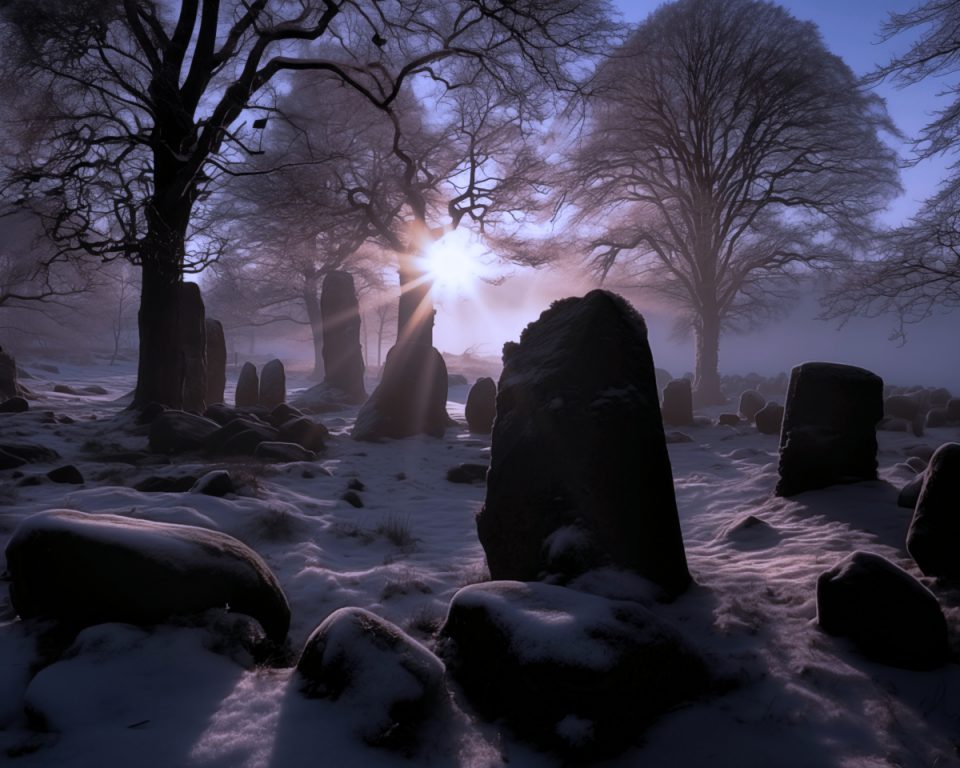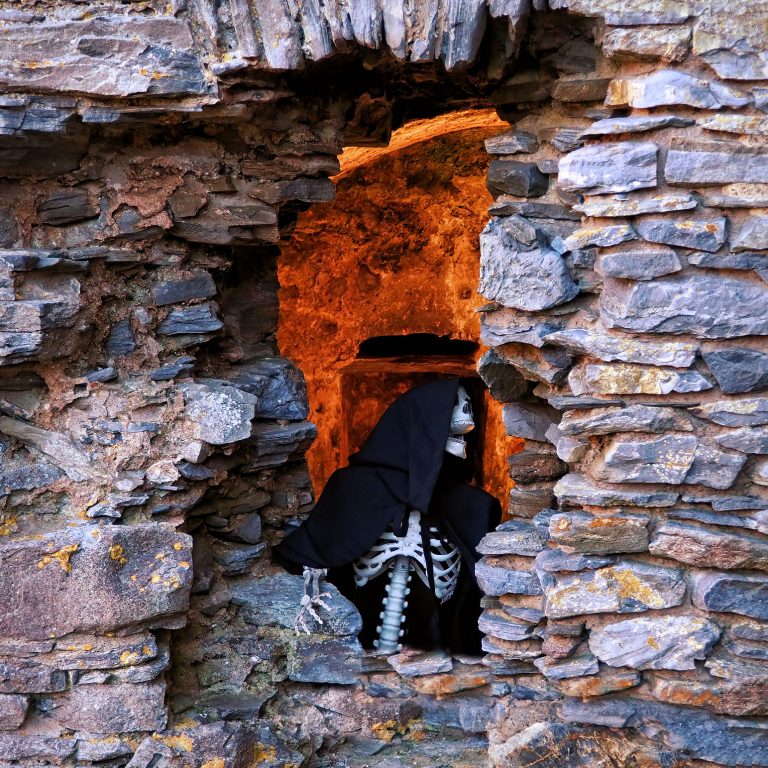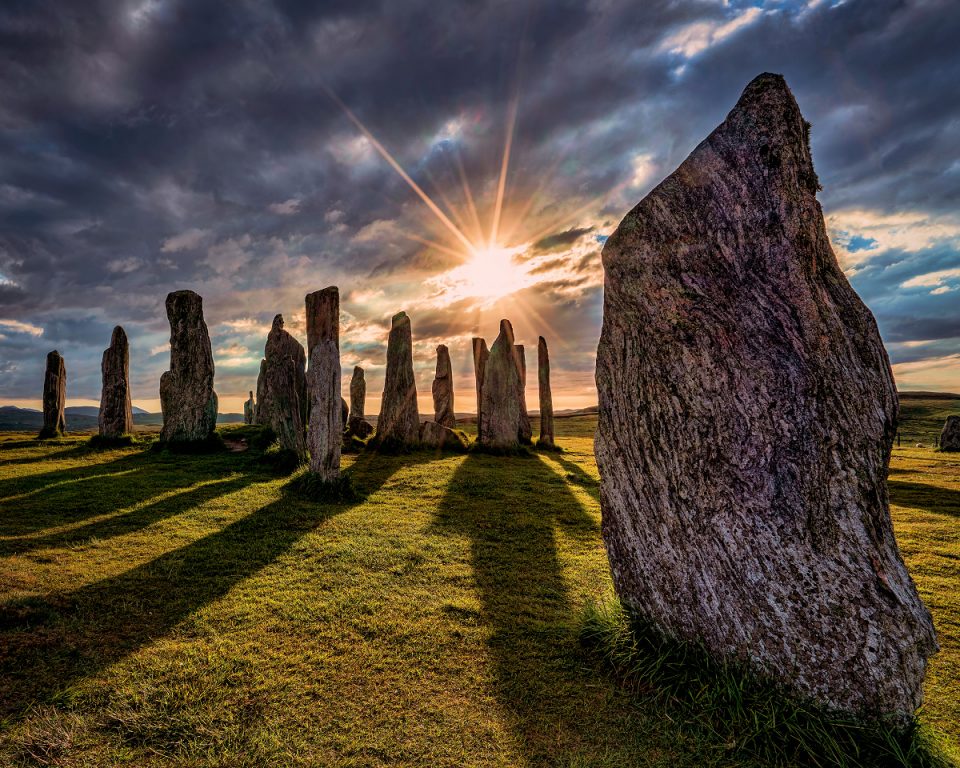The Yules was the old festive celebration in Orkney and Shetland derived from the old Norse Celebration of the Viking Settlers who once inhabited Scotland’s Northern Isles. However, long before the Norsemen arrived, the prehistoric peoples of Orkney had built the cairn at Maeshowe, with its entrance aligned to the Winter solstice.
The old ways are fading into the mist, and although Santa might be pronounced ‘Santie’ in the lovely lilting dialect of the Shetlanders, Christmas in the Northern Isles is now often the same generic offering of consumerism that has spread across the Western World.
Surprisingly, the islanders had clung to the old ways for a long time. Some still do. The change to a modern Christmas only occurred in the latter end of the Twentieth Century. This is in line with the rest of Scotland, for Christmas only became a public holiday in 1958.
Viking Origins of the Yules
From the 8th century onwards, the Norse settled in Orkney and Shetland. They brought with them a pagan midwinter festival- Yule or Jol. In the Northern Isles, Yule lasted for a month and was known as ‘The Yules’ or ‘atween the Yules’.
It was a time of fiddling, dancing, friendship, and a big helping of superstition. Every evening a dance was held in a barn somewhere in the community, bringing a much-needed distraction on the long winter nights. Daylight lasts a mere six hours so far north.
Superstition played a prominent role throughout the Yules- it was a time when trows were thought to be at their most active.
What is a Trow?
Trows are tiny creatures that form part of the folklore of the Northern Isles. They were said to live in the mounds that are scattered across the islands and that they could only venture amongst humankind in the dark or in the depths of winter when their power was said to be greatest. These mischievous characters reputedly love fiddle music but deplore a disorderly home. They were often blamed for unexplained infant death.
Nicolson’s Folk-Tales and Legends of Shetland (1920) describes Trows as “generally referred to as the peerie (little) folk. They had their abodes in the hills, and the nooks and crannies curtained by the delicate fronds of the Trows’ Kairds (ferns), were known as the Trows’ hadds (holds). They couldn’t bear the light of day so would swarm forth at night, dancing and enjoying themselves”.
From Jamieson’s Sigurd O’Gord article in the Shetland News (1962) we read, “They were not lovable but sometimes capable of helpful acts. They were mischievous rather than malicious and took delight in perversities that made people’s affairs go awry – the ale to go sour, butter to go rancid, the fire to send out showers of sparks and such like tricks.” He portrays them as “small, no more than three feet tall, dark with straight, lank black hair, dark eyes, and pointed features”.
Saxby and Edmondston’s ‘Home of a Naturalist’ (1888) refers to them as the “grey-folk“.
Trow Homes
Trows homes, known by the locals as howes or knowes, are said to be sumptuous and dazzling. The walls are said to be adorned with gold, silver and other precious materials, while only the best of fayre is served on their tables. Deep inside these magical halls, ‘da peerie trows’ would satisfy their insatiable passion for music and dancing, very often luring mortal fiddlers inside to perform at their otherworldly celebrations.
Trows and the Yules
With their great love of music and revelry, it is little wonder that Trows are said to be excessively keen to join in the human celebrations during the Yules. Alas, they can only do this in the disguise of a mortal. A tale is told of two children who were left in their bed whilst the parents joined the dancing in the next house. The merriments were underway when the two small bairns slipped into the barn, with wide-open eyes and smiling lips that never said a word. Soon, they were dancing merrily up and down, keeping wonderful time and dancing with such marvellous steps that the merrymakers stated they must have been taught by the Trows.
The young mother suddenly noticed them and cried in horror “Guid save me, the bairns!”. Now no Trow can remain visible when a pious word is spoken, so the little creatures vanished at once through the crowd at the door. The revellers hastened outside to search for them in the snow, but sadly they could find them nowhere. The distraught mother had forgotten to ‘sain’ and protect her children, thus allowing the Trows to take the form of the children to go dancing. Unfortunately, the children were found dead the next morning in a snowdrift in a ravine near the house, wrapped in each other’s arms.
The Yules- a Feast of the Dead
The Yules’ strong association with mischievous creatures such as trows and Orkney’s Hogboons, undoubtedly stems from its origins as a feast for the dead- much like the Celtic Samhain. Over time, the memories of those powerful ancestral spirits, who were permitted to leave their graveyard mounds at Yule to return to the world of the living, was corrupted and thus the trow was born.
Tulya’s E’en
The Yules began seven days before Yule Day on what was known as Tulya’s E’en. This was the night when Trows were given permission to leave their underground homes and sojourn in the world of men. Thus, at dusk, humans would set about safeguarding their children, livestock, and property. The most effective way of doing this was sainin’- the act of making the sign of the cross.
In addition, a cross made from two pieces of straw was placed outside the yard. Plaiting the hair from each cow and placing it on the byre door was supposed to offer protection to the animals within. As a final act of protection, a blazing peat would be carried through all the outhouses.
Helya’s Night or Mother’s Night
A day later came Heyla’s Night. On this night, the children of each household were committed into the protection of ‘Midder Mary” or Mother Mary. On the face of things, this seems to be a purely Christian ritual, venerating the Virgin Mary. However, it seems that this night also has its roots in ancient paganism.
Across pre-Christian Europe, a Mother Goddess was worshipped. On the Scottish mainland, this would have been the Cailleach. Here, among these people of Viking descent, the children had centuries before, been committed to the protection of a Goddess, the Disir. However, it later became Christianised and the ‘mother’ was naturally equated with Mary, the mother of the Christ child.
On this night the following words were recited over each of the sleeping children:
“Mary Midder had de haund
Ower aboot for sleepin-baund
Had da lass an’ had da wife,
Had da bairn a’ its life.
Mary Midder had de haund.
Roond da infants o’ wur land.”
This was a night when hot milk and meal were eaten.
Tammasmas E’en
After Heyla’s Night came Tammasmas. No work was to be done after dusk on Tammasmas: breaking that rule would mean bad luck. In the old rhyme which follows, “dül” means sorrow:
The very babe unborn cries, “Oh dül, dül”,
For the brakkin o” Tammasmas Nicht
Five nichts afore Yule.
Sow Day
On Orkney, the 17th December was known as ‘Sow’s Day’ for on this day, those amongst the islanders who kept pigs would slaughter a sow for Yule. The origins of this seem to go back to their Viking forbears as pork is a traditional Yule dish in Norway. The boar is an animal sacred to Freyr, the Norse God of Yule and fertility.
The ancient Norse tradition involved bringing the best boar of the herd into the hall on Yule’s Eve. The gathered assembly would lay their hands on the beast and make sacred, unbreakable oaths, oaths which would be carried straight to Freyr’s ears. The boar would then be sacrificed, and the feast of boar flesh would commence.
Byanna’s Sunday
Byanna or Byaena’s Day occurred on the Sunday before Yule Day. On this day supper consisted of half a cow’s head boiled. Brose was made from bursteen (a kind of oatmeal) and fat from the cooking liquid.
Afterwards, the skull would be cleaned, and a candle was stuck in the eye-socket ready for Yule morning.
Yule Eve
This was a time of great preparation. Bread was made and Yule cakes for the children. These cakes were decorated around the outside with pinch marks, and a hole was cut into the centre. Undoubtedly these sun-shaped cakes symbolised the sun and celebrated its rebirth.
Not only was it a time for preparing food but the house needed to be tidied too. After all the trows did not like an untidy house. No doubt this harkens back to the trows’ original role as spirits of the dead. Just as the house had to be prepared for the arrival of mortal visitors, everything had to be in its place to tempt the spirits of the family’s ancestors back across their threshold.
Preventive Action against Trows at Yule Eve
Everyone had to wash from head to toe. Three burning peats were dropped in the water “less the trows take the power o’ the feet or hands”.
Once each member of the household had washed, new or at least clean nightclothes were put on. After the housework had been completed and the dirty water safely thrown away, the locks were opened, and an iron blade placed beside the door. Apparently, iron acts as a taboo for Trows. Finally, a lamp or candle would be lit. This was left to burn in the window throughout the long winter night.
Yule Day
Everybody would be up before dawn on Yule Day. However, this was no great hardship as sunrise occurs after 9am at this time of the year. Often, they woke to the sound of travelling fiddlers. The candle in the skull would then be light and the guidman would head to the byre. The candle would then be used to singe the livestock’s hair. This ensured that the animals would thrive over the coming year.
Everyone, both young and old would be offered an early morning dram followed by a hearty breakfast. At this meal, it was customary for an extra place to be laid at the table, a custom that has its origins in Yule’s ancient roots as a festival for the dead.
Yule Day Feasting
Later in the day salted or fresh mutton, beef or pork, along with salt or dried fish, would be consumed. Buns flavoured with spices and peel were made. With the passage of time imported treats such as oranges and dates became more widespread. A potato soup made with reestit mutton (mutton steeped in brine, then dried) was an essential part of the celebrations.
Yule bonfires were lit on the hilltops in to dispel the evil that was said to be abroad and also to return fertility to the fields.
In Orkney and Shetland Yule also saw the young men of the townships participating in a rough kind of mass football game. The only remnant of the tradition found today is in the form of Kirkwall’s ‘Ba’.
The Walking Stones of the Yules.
According to Orcadian folklore, once a year, usually at New Year, some of the standing stones are said to ‘walk’. These stones were once giants which had been turned to stone. At New Year they move from their resting place to nearby bodies of water where they dip their heads down and “drink” the water. The best known of these stones are the Yetnasteen and the Stane o’ Quoybune,
Foula Stays with the Old Dates for The Yules
Meanwhile, on the remote Shetland island of Foula, the 30-strong population adhere to the 2,000 year-old Julian calendar. They do not celebrate Yule until January the 6th and ‘Newerday’ on the 13th.
Yuletide Greetings
Festive Greetings from Spooky Scotland. We would love to hear what your festive traditions are in your part of the world. Please leave a comment in the box below.




